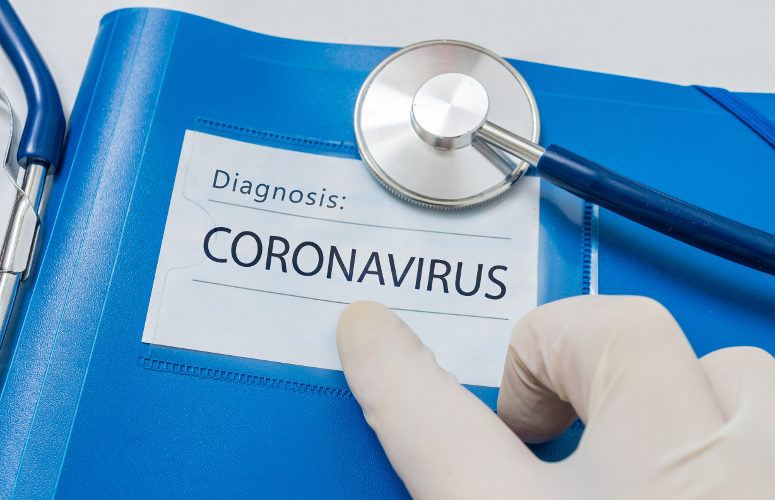
Modern Nursing
Clinicians, Coordinators and Leaders
By By Melinda Caliendo On Mar 30, 2016For Dr. Aline Holmes, the field of nursing has changed dramatically during her career. When Holmes – a registered nurse, doctor of nursing practice and senior vice president of clinical affairs at the New Jersey Hospital Association – began her career in the 1960s, there were maybe 100 different medications available for doctors to prescribe. Ventilators weren’t part of her clinical experience until she was in the Navy during the Vietnam War.
Holmes says she couldn’t imagine the growth in pharmaceutical development, new diagnostic tools and available therapies that are now all parts of the advanced care nurses need to coordinate.
There is a disconnect between what nurses actually do in a hospital setting and what the general public thinks they do. While advocating at the state level, one nurse leader discovered a prevailing attitude that nurses just “follow doctor’s orders.”
But today’s healthcare professionals will tell you that fulfilling medical orders from physicians is only part of the job; nurses are also aligning dietary needs, therapy times, scheduled diagnostic tests, visits from specialists and any other various care necessities within a hospital – while leading a care team that includes additional support personnel. Care coordination is one of the buzz phrases surrounding healthcare reform, but in practice it is the meaningful way nurses advocate for their patients.
In fact, healthcare reform has fueled the most dramatic changes in nursing in the last 50 years. Nurses are more involved clinically, have much higher-intensity training and are more leadership-focused than ever before.
There are 31,123 nurses employed at hospitals in New Jersey, including those working at 23 Magnet Program hospitals, which have been recognized by the American Nurses Credentialing Center for demonstrating excellence in 35 different nursing areas of focus. They are often the first person you see entering a hospital and the last person you talk to before being discharged.
According to Maria Brennan, RN, DNP, president of the Organization of Nurse Leaders-New Jersey, the No. 1 skill nurses need today is the ability to assess and examine the patient.
“He or she is evaluating, doing the physical exam, listening to heart sounds and lung sounds. She’s evaluating the whole psycho-social environment of the patient,” Brennan said of the modern nurse. “Today’s nurse has a total holistic picture of the patient.”
“What I think people also don’t realize is the nurse is the one picking up – because she’s there 24-7 – the changes in patient condition … and that is the key driver of the hospital stay,” Brennan added. “That assessment [by] the nurse is key in the care and treatment of the patient, and also many times is a lifesaving measure for the patient. The nurse discovers the problem, calls the physician and gets the appropriate order that may ultimately save [his or her] life.”
In order to coordinate care and provide clinical insight at the highest levels, some of the tasks that don’t utilize a nurse’s full education are delegated to technicians, certified nursing assistants or other ancillary staff. Adding to that “team approach” is the specialized support of rapid response teams – expert clinicians who may not be assigned to a specific floor or unit in the hospital, but can mobilize quickly to provide a higher level of staffing and expertise in urgent situations.
This varied but coordinated level of staffing provides the flexibility and fluidity that’s needed to deliver efficient and effective patient care.
“It’s really an entire interdisciplinary team that’s caring for that patient,” Brennan said. “I feel the physician leads the team, but the nurse manages the care on a minute-to-minute basis.”
For the necessary experience to notice the subtle changes in a patient, nurses go through longer, more intensive training than they ever had before.
For much of the era of modern medicine, nurses needed a two-year associate’s degree to practice. But in 2010, a report from the Institute of Medicine, The
Future of Nursing: Leading Change, Advancing Health, was published, stating that there is a direct correlation between quality of care and the level of education of the nurses providing that care. The report recommended that 80 percent of nurses have a four-year baccalaureate degree by the year 2020. The suggestion has been taken to heart: For a hospital to be named a Magnet Program, it must be able to show that at least 80 percent of its nursing staff has a four-year degree within the next several years.
For a state like New Jersey, which has one of the highest number of Magnet Program hospitals in the nation, that’s a lot of new baccalaureate degrees.
“We as a profession have really been working extremely hard to get those BSN rates up,” Brennan said.
The Robert Wood Johnson Foundation and the New Jersey Chamber of Commerce launched the New Jersey Nursing Initiative (NJNI) in 2009 to increase the number of nurses in the state with Masters and Doctorates of Nursing in order to expand the faculty available to teach bachelor of science nursing students. With 61 scholars supported, NJNI has shifted to changing curricula to better fit the way healthcare is now delivered.
Holmes, also the co-director of NJNI with Susan Salmond, RN, EdD, executive vice dean and professor at Rutgers’ Division of Nursing Science, said nurses are “much more sophisticated” than their early predecessors. Their training now consists of things like monitoring respiration, surgical assistance and patient education.
“New nurses recognize their role as the facilitator of care; they are running the show,” Holmes said. “They coordinate technicians, housekeepers, aides, physicians and specialists all for the benefit of the patient. Nurses understand the breadth and depth of the team needed for excellent care, and manage all the players.”
Brennan says the nurses who graduate from BSN programs have had critical thinking skills embedded more deeply during the extra two years of schooling, yet all new nurses truly need an extensive orientation at their hospitals to build on the basic clinical skills they learn.
For at least eight weeks when they arrive at a hospital, new nurses are paired with experienced RNs and go through an intensive learning experience in both the classroom and on the patient-care unit. It’s in these orientation programs that specialization gets added.
Brennan knows this firsthand; she started her nursing career with an associate’s degree on the neurosurgery floor, then moved through various units before getting her doctorate and joining administration as a chief nursing officer. Each transition was a learning process for her.
“We have specialty educators – an emergency room specialty educator will follow that nurse in making sure that he or she is exposed to all sorts of situations in the ER, that they’re able to handle all of the different types of patients that come in,” Brennan said.
Nurses self-select into their specialties, says Holmes, and what seems like second-nature to an Emergency Department nurse could be stressful to a nurse in another specialty, and the same in return.
“In critical care… you would get the didactics of how to do a high-level neurology exam, how to do a high-level assessment of the heart, how to read EKGs and the appropriate treatment of those rhythms as they change,” Brennan said, adding that this type of training can last up to six months. “They have an experienced nurse guiding them through that real-world experience.”
In addition to the increased specialized clinical training received, today’s nurses also receive mentoring on professional development and leadership.
“Boards of directors recognize the next generation of nurse leaders needs to be prepared to take over. Mentoring is such an important part of professional development,” said Susan Cholewka, executive director of ONL-NJ.
The American Organization of Nurse Executives recognized ONL-NJ in 2014 with the Chapter Achievement award for a mentoring program that pairs experienced nurse leaders with those who are just beginning their leadership journey. The mentoring program has been so successful that other states have requested information on how to replicate it in their own programs.
Hospitals need nurse leadership, as Cholewka says nurses are the premier leaders in patient advocacy. “They live and breathe it. Nurses are a key ally and support for hospital-based initiatives,” she added.
“Nurses are a real driver within hospitals to lead quality collaboratives that will enhance the safety of patients,” Brennan said, noting that recent initiatives already have impacted care. A report by NJHA in September 2015 showed that a three-year program that utilized nurse-led implementation reduced infection rates by 27.1 percent, and saved $120 million at hospitals around the state.
Cholewka’s point is echoed in the Future of Nursing report in the recommendation that nurses should be full partners, with physicians and other healthcare professionals, in redesigning healthcare in the United States. Often, it is administrative positions or seats on the board of trustees that have the type of influence and input on care redesign.
Brennan herself left bedside nursing to join the C-suite, so she could have a more global impact on the care provided in her facility. It was a difficult decision, as she has a true love of inpatient nursing, but her experience directing care has been very positive. She said chief nursing officers are an “equal member of the C-suite but have a tremendous impact on the outcomes for patient care.”
“Many nurses in our state are becoming CEOs or COOs, so they’re taking even higher leadership positions within the C-suite, which is wonderful because we have a different way of looking at hospital operations,” Brennan said. “CEOs and boards are valuing their clinical knowledge and knowledge of quality. Quality translates into efficiency, which translates into cost savings.”
Related Articles:






